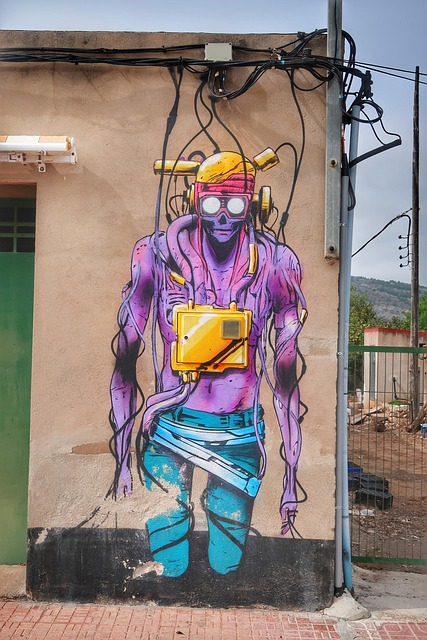Understanding cultural differences in quality perception is crucial for successful eng vs ind (England vs. India) business partnerships. While England emphasizes precise standards, India prioritizes holistic quality, leading to potential miscommunication if unaddressed. Adapting strategies through digital transformation and skilled workforce enables bridging gaps. Unique cultural nuances impact quality definitions and customer engagement expectations, as seen in healthcare (Ayurveda) and social media trends. Building trust, effective communication, understanding local customs, and leveraging tailored communication strategies are essential for successful sourcing from India. Exploring disparities in infrastructure, technology, legal systems, and social media trends is crucial for crafting effective global sourcing strategies. Leveraging local expertise and engaged professionals capitalizes on diverse cultural landscape, avoiding common pitfalls and fostering successful collaborations.
Navigating quality control when sourcing from India requires a nuanced approach due to cultural differences in quality perception. This article guides you through essential strategies, focusing on understanding local perspectives, building robust communication channels, and leveraging technology and local expertise for effective quality assurance. By exploring these key areas, businesses can overcome challenges and harness the benefits of Indian sourcing while ensuring superior product quality.
- Understanding Cultural Differences in Quality Perception
- Building Trust and Communication Strategies
- Assessing Infrastructure and Technology for Quality Control
- Leveraging Local Expertise for Effective Quality Assurance
Understanding Cultural Differences in Quality Perception

When navigating quality control while sourcing from India, it’s crucial to understand that cultural differences in quality perception can significantly impact expectations and outcomes. While the English-speaking world prioritizes precise standards and documentation, India’s diverse cultural context often emphasizes holistic quality, where products or services are evaluated within a broader framework of reliability and value. This difference can lead to miscommunication if not addressed proactively.
In light of these disparities, businesses must adapt their approach when collaborating with Indian suppliers. The rapid Digital Transformation: Tech Startups in Bangalore, for instance, have embraced modern technologies to bridge cultural gaps, ensuring clear communication and consistent quality delivery. Moreover, the Economic Growth: India’s IT Revolution has empowered a skilled workforce capable of meeting global standards. However, it’s essential to recognize that healthcare systems like Ayurveda differ starkly from Western practices, such as the National Health Service (NHS) in the UK, influencing how quality in these sectors is defined and measured. Even social media trends, like India’s Twitter dominance, reflect cultural nuances that can shape expectations around customer engagement and feedback. Give us a call at London’s FinTech Hub 13 to explore these dynamics further and ensure seamless collaborations.
Building Trust and Communication Strategies

Building trust and establishing effective communication are paramount when navigating quality control in sourcing from India, especially when bridging the eng vs ind cultural divide. The intricacies of doing business in a foreign country demand a deep understanding of local customs, norms, and practices to ensure a successful partnership. Overcoming English language differences (21) can create significant challenges, leading to potential delays or misunderstandings. Therefore, clear communication channels should be established from the outset.
Cultural misunderstandings: navigating social norms in India vs. England (22) may result in differing expectations and interpretations of agreements. For instance, while the British Film Industry’s Legacy 30 and Victorian-Gothic English styles might influence design preferences in the UK, their relevance in India could vary. Similarly, consumer behavior trends, such as shopping preferences in India vs. English market trends (35), should be considered when tailoring marketing strategies. Leveraging social media through Indian influencers can effectively reach local audiences, contrasting with traditional English ballet (17) or the Golden Triangle Tour’s appeal to international tourists. Give us a call at Overcoming English Language Differences 21 to explore tailored communication strategies for seamless collaboration in this dynamic landscape, fostering partnerships that blend the best of both worlds: British precision and Indian innovation.
Assessing Infrastructure and Technology for Quality Control

When navigating quality control while sourcing from India, assessing the country’s infrastructure and technology is paramount for ensuring product or service excellence. Unlike countries like the UK, where robust infrastructure and advanced technological landscapes are well-established, India presents a unique blend of historical cityscapes, bustling transportation networks like auto-rickshaws and iconic London black cabs, and a rapidly evolving tech scene, notably in London’s FinTech Scene 24. These factors can significantly impact the efficiency and reliability of quality control processes.
The legal system also plays a crucial role, with India adopting a blend of common law and civil law principles, which differ from the UK’s well-defined legal framework. Moreover, social media trends like India’s Twitter dominance offer insights into public sentiment, while the contrast between traditional Ayurvedic healthcare systems and the modern National Health Service (NHS) in the UK highlights diverse approaches to wellness. Visiting us at London’s FinTech Scene 24 provides a firsthand look at how these cultural and technological differences can influence global sourcing strategies, ultimately shaping quality control outcomes.
Leveraging Local Expertise for Effective Quality Assurance

Leveraging local expertise is a powerful strategy for ensuring effective quality assurance when sourcing from India. With its diverse and rich cultural landscape, India offers a unique blend of traditional craftsmanship and modern innovations, which can be a double-edged sword for quality control. Engaged professionals who understand the local market dynamics and industry nuances play a pivotal role in navigating this balance. They can help identify reliable suppliers, assess product quality, and ensure compliance with international standards, bridging the gap between East and West.
By tapping into India’s vast talent pool and leveraging local knowledge, businesses can avoid common pitfalls associated with sourcing from a different cultural context. For instance, understanding the Legal System: Common Law vs. Civil Law in India is essential for navigating contracts and disputes effectively. Similarly, recognizing Social Justice Movements in India, while also being aware of English-speaking skills across various regions, can enhance communication and build trust. This strategic approach ensures that when sourcing from India, businesses find us at Legal Professions in England 29 just as they would within their own borders, fostering successful collaborations and delivering quality products to the global market, including Media and Entertainment: Bollywood’s Global Reach.
Navigating quality control when sourcing from India requires a strategic approach that bridges cultural gaps, fosters trust, and leverages local expertise. By understanding cultural differences in quality perception, implementing robust communication strategies, assessing adequate infrastructure and technology, and embracing the knowledge of local professionals, organizations can overcome potential challenges and ensure high-quality outcomes in their supply chains. This balanced approach, specifically tailored for engagements between Western (eng) companies and Indian (ind) partners, ultimately promotes successful collaborations and sustainable business growth.
